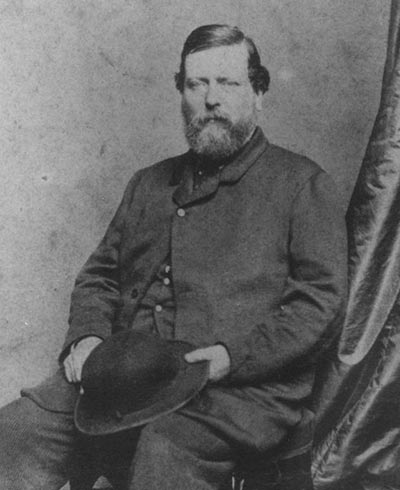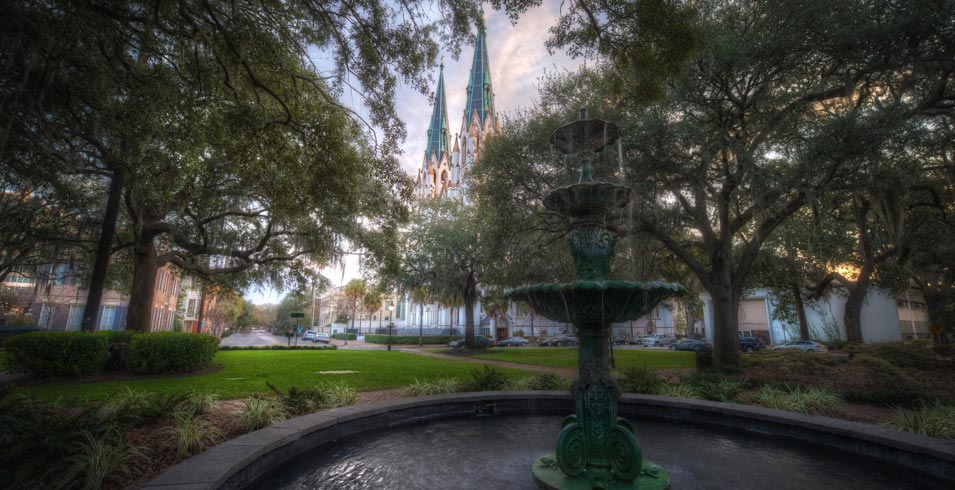The Andrew Low House is one of Savannah, Georgia’s most treasured historic landmarks.
The current museum was once the residence of the Low Family, whose patriarch, Andrew Low II, went from being a humble worker to becoming the richest man in the city.
The home is a beautiful reminder of the past, encompassing the hardships and the successes that formed the adventurous life of Andrew Low—holding within its many chambers the secrets and memories of a lifetime.

Andrew Low II was born on July 20, 1812, to William and Katherine Low. His father, a grocery store owner, instilled the importance of hard work and perseverance in the young boy.
This formidable upbringing was perhaps what motivated 17-year-old Low to leave his home in England and set sail to Georgia’s thriving coastal city: Savannah.
His uncle, Andrew Low I, had already established himself as a prominent figure in the cotton industry and was currently operating a company in the southern city.
Upon arrival, his adept nephew went straight to work, learning the ins and outs of the textile trade. His improvement was so outstanding that he soon became a partner in his uncle’s company.
In 1839, only ten years after Low’s arrival, his uncle left the Savannah branch in his care and continued his work in England. Again, low took the reins and made great strides, further scaling the family business.
He made regular, fruitful trips to England in which he supplied the cotton demand and established professional relationships. These endeavors fueled his company’s development, eventually rendering him the richest man in Savannah.
Low married Sarah Cecil Hunter, who came from a wealthy southern family. The couple had a son and two daughters. Low hired New York architect John Norris to design and build the large estate we now call the Andrew Low House to accommodate his growing family.
His remarkable life began to take a grievous turn in August 1848, after his 3-year-old son suddenly died.
As the months went by, his father, uncle, and wife passed away. By the time the home was finished in 1849, only himself and his two daughters remained.
At age 42, Low married his second wife, 20-year-old Mary Cowper Stiles. The couple was thrilled, honeymooning in Europe before returning to Savannah, then settling in the home and having children.
However, as the tensions between the north and the south heightened, Low’s happy family life was disturbed again.
In 1861, the disagreement between the northern Unionists and the southern Confederacy over the enslavement of African Americans reached its peak, culminating in the American Civil War.
After spending most of his adult life in the south, Low was attached to Savannah and its ideals. To assist the Confederate Army, he devised a plan with his wife. They would travel to England and send ships with weapons to Georgia.
Knowing they could not sail from their current location - as setting sail from Savannah was too risky, they left their kids with their grandmother and headed to Canada.
From there, they were able to sail to England without a hitch. They justified the trip, stating they intended to take care of business in Europe and visit Low’s daughters in boarding school.
Once in England, it is said that Low, his wife, and a few of his colleagues loaded ships with guns and munitions and sent them to Savannah.
However, their operation was somehow compromised, and the parties involved were promptly arrested upon their arrival in the United States.
Several petitions were submitted vouching for the Lows and their character. If Andrew Low were to be released from prison, he would have to vow not to interfere or aid the Confederate Army any further.
Upon petitioning for his release, Low’s friends argued that he was a good man and that if released, he would not violate the terms imposed by the Union.
After considerable deliberation, Low was released on probation. He was, however, not permitted to travel south until three months later.
Finally, on June 3, 1862, he arrived in Savannah and was reunited with his family. Two days after his arrival, his last son was born. Unfortunately, his second wife died one year later, at age 31.
Although Savannah was spared from destruction, the war crippled the once prosperous city. The wealth and resources many families had enjoyed for generations had been decimated.
So now, once again widowed, Low evaluated his remaining fortune and decided that the best place to raise his children would be in England.
The family moved to Leamington, England, where the younger children were provided an excellent education and the others married.
He, of course, would often return to Savannah on both leisure and business trips. Low maintained ownership of the beautiful family home and stayed there whenever he visited.
Low died in England on June 27, 1886, and his remains were brought to Savannah’s Laurel Grove Cemetery to be buried with his two wives.
Low died in England on June 27, 1886, and his remains were brought to the Savannah’s Laurel Grove Cemetery to be buried with his two wives.

The famous Andrew Low House is a reflection of 19th-century luxury and refinement. The home’s Italianate style features Greek Revival details, seamlessly merging the passé with the contemporary.
Intricate Greek-style columns frame the large front entrance. The deep mahogany door, dark-trimmed windows, and rectangular outline encompass the fashionable architectural modality.
The boundaries of the home are enclosed by a black, ornate cast-iron balcony and gated fence.
The front yard is adorned by neatly trimmed bushes surrounding a bed of delicate, brightly-colored flowers. Strategically placed sago palms and arborvitae shrubs further add to the home’s appeal’s certain je ne sais quoi.
The home remained in the family until Juliette Gordon Low passed away in 1927. Gordon, Andrew Low’s daughter-in-law, was famous in Savannah for founding the Girl Scouts.
The first Girl Scout troop met in the home's parlor in 1912. Today, the house is visited by Girl Scouts from all over the United States to admire the organization’s birthplace.
After her passing, the home was purchased by The National Society of The Colonial Dames of America in the State of Georgia.
The association cared for the home and restored it to its original grandeur. Finally, in 1952, the home was turned into a museum and opened to the public.
The home's interior is just as exquisite as its exterior, with many rooms decorated impeccably. The building consists of a formal and informal parlor, dining room, library, five bedrooms, and a bathing room.
The color palette is both the formal and informal parlors consisting of vibrant reds, creams, and browns. In addition, the rooms contain many reddish wooden accents and furnishings.
While the formal parlor was used to entertain their most notable guests, the informal parlor was used for casual events and meetings.
Once again, impeccable wooden furniture is found in the dining room. In its center stands a large table that could accommodate over ten guests. Along with the vibrant reds found throughout the home, the dining room is embellished with lustrous emerald green tones.
Meals were served on expensive French porcelain. The glassware and dinnerware used by the family are currently on display in the museum.
The ceilings throughout the home are rimmed with antiqued crown moldings brought together by shimmering crystal chandeliers. Each room is unique, each piece of furniture well thought out and purposeful.
John Norris designed the avant-garde home with functionality and technology in mind, and the architect was responsible for the elegant build.
One of Norris’ most innovative installations in the home was a cistern. The cistern was installed in the attic, making this one of the first homes in Savannah to have a plumbing system. This system supplied water for both the kitchen and bathing room.
Several prominent guests graced the mansion's halls while it was still home. One of these guests was British novelist William Makepeace Thackeray, famous for his satirical works and controversial parodies.
Thackeray stayed in the Low family home in 1853 and 1856 while he conducted lectures.
In 1870, Confederate Army Commander Robert Edward Lee spent the night in the home. Lee and his daughter Agnes arrived in Savannah by train.
Their arrival was much expected, and when they stepped off the train, they were greeted by a large crowd. Both were then brought to the Andrew Low House to sleep after the long journey.
The home-turned-museum is located on 329 Abercorn Street and is currently open to the public, conducting daily tours. Tours are offered seven days a week, in which guides dive deep into the fascinating history of the building and its owners.
This historically immersive experience is suitable for all ages. Both individuals and groups are welcome. Visit the Andrew Low House Museum and revel in the classy southern charm of the past!
The home-turned-museum is located on 329 Abercorn Street, on Lafayette Square, and is currently open to the public, conducting daily tours. Tours are offered seven days a week, in which guides dive deep into the fascinating history of the building and its owners.
This historically immersive experience is suitable for all ages. Both individuals and groups are welcome. Visit the Andrew Low House Museum and revel in the classy southern charm of the past!
Gallivanter offers the widest variety of highly-rated tours in Savannah. Make sure to book one for your trip to Savannah!
Our Savannah Tours